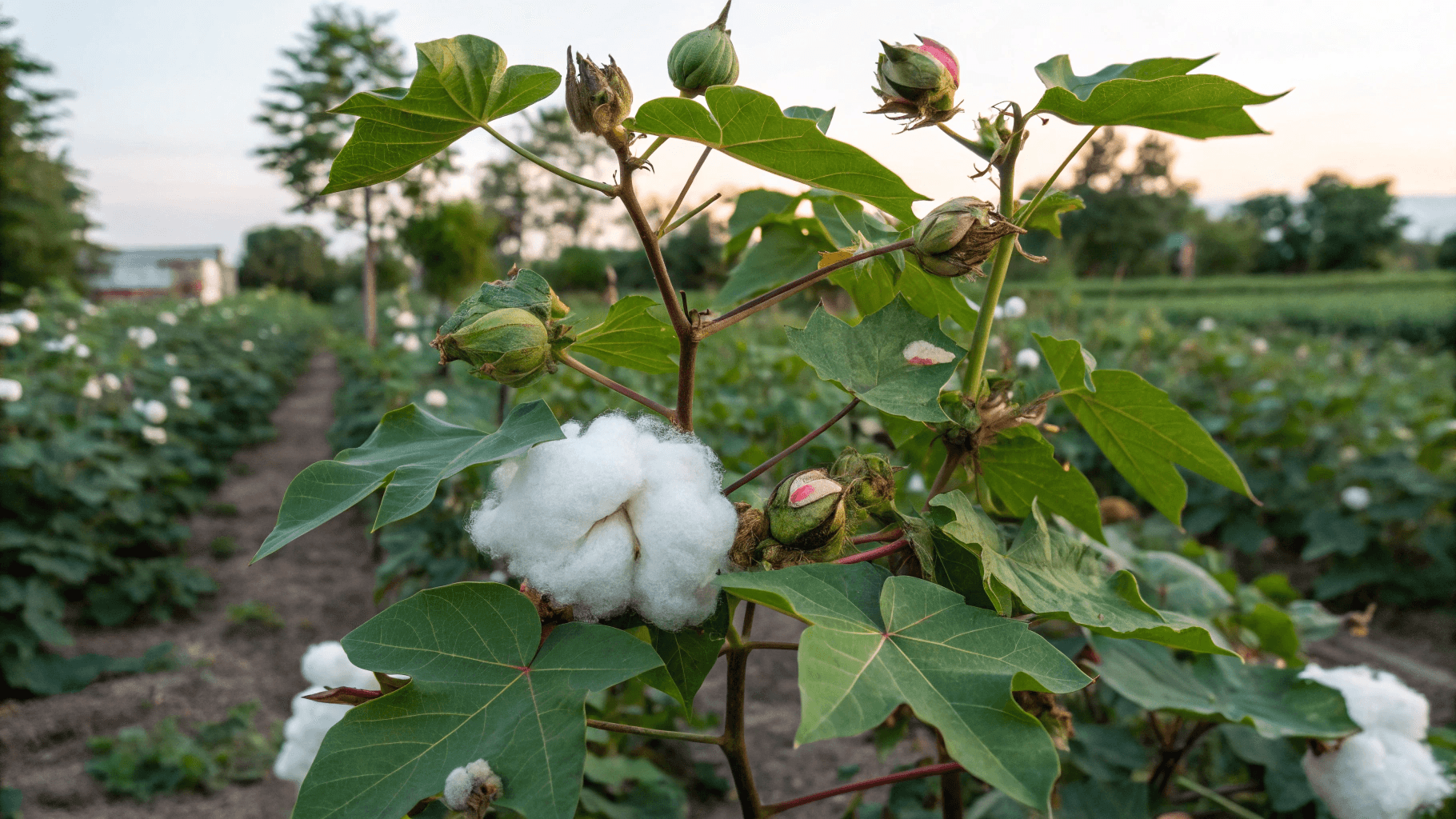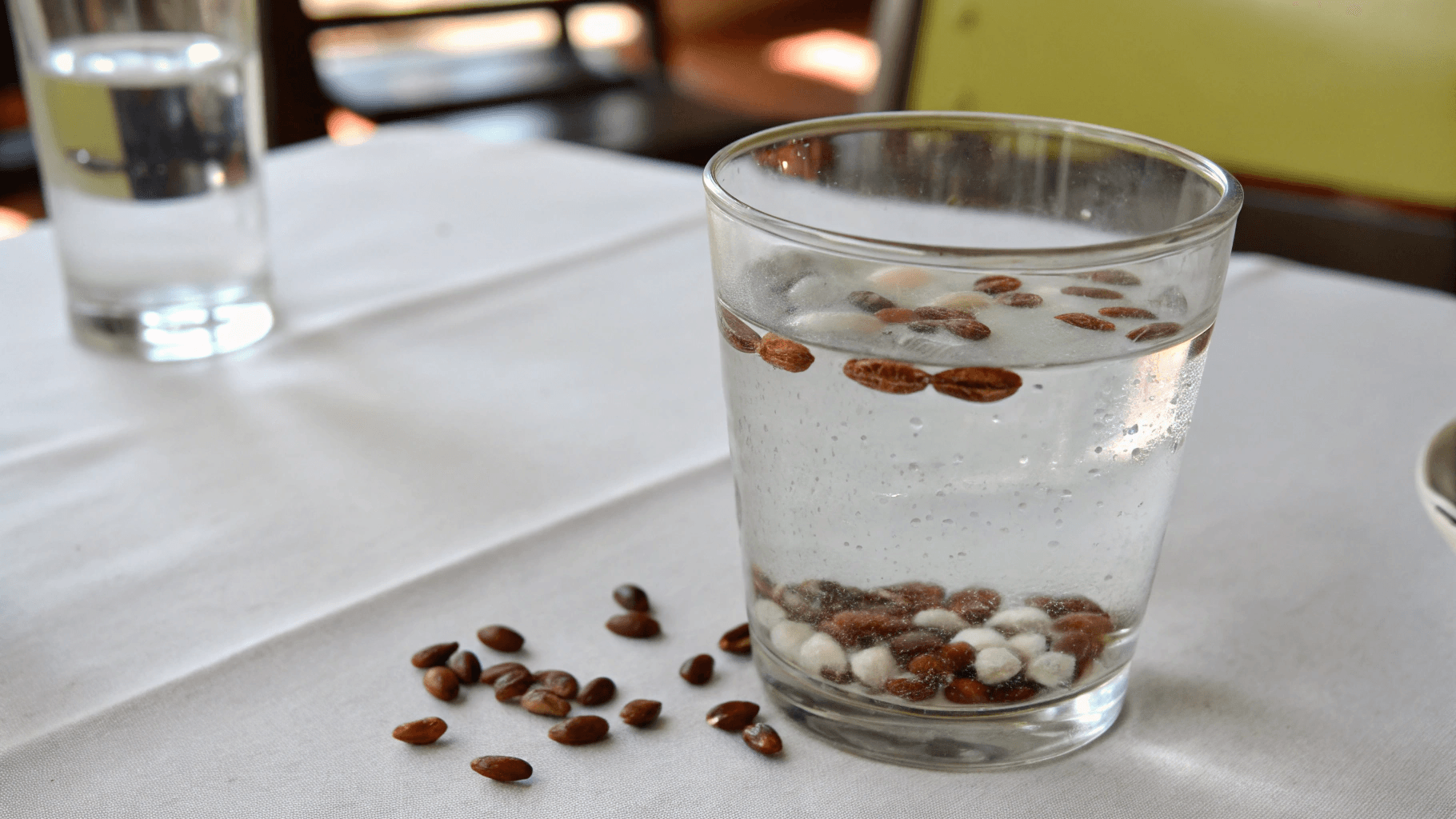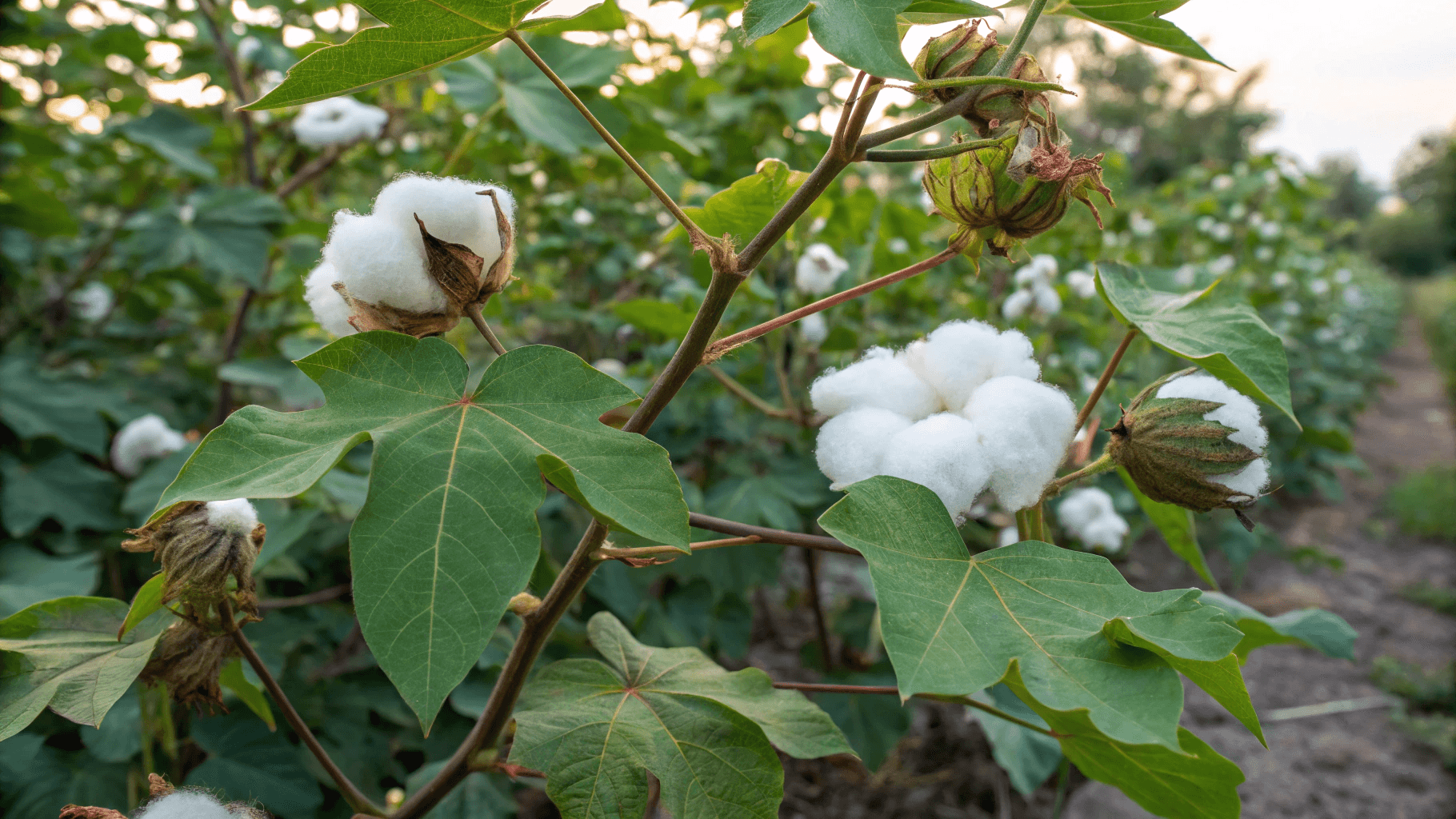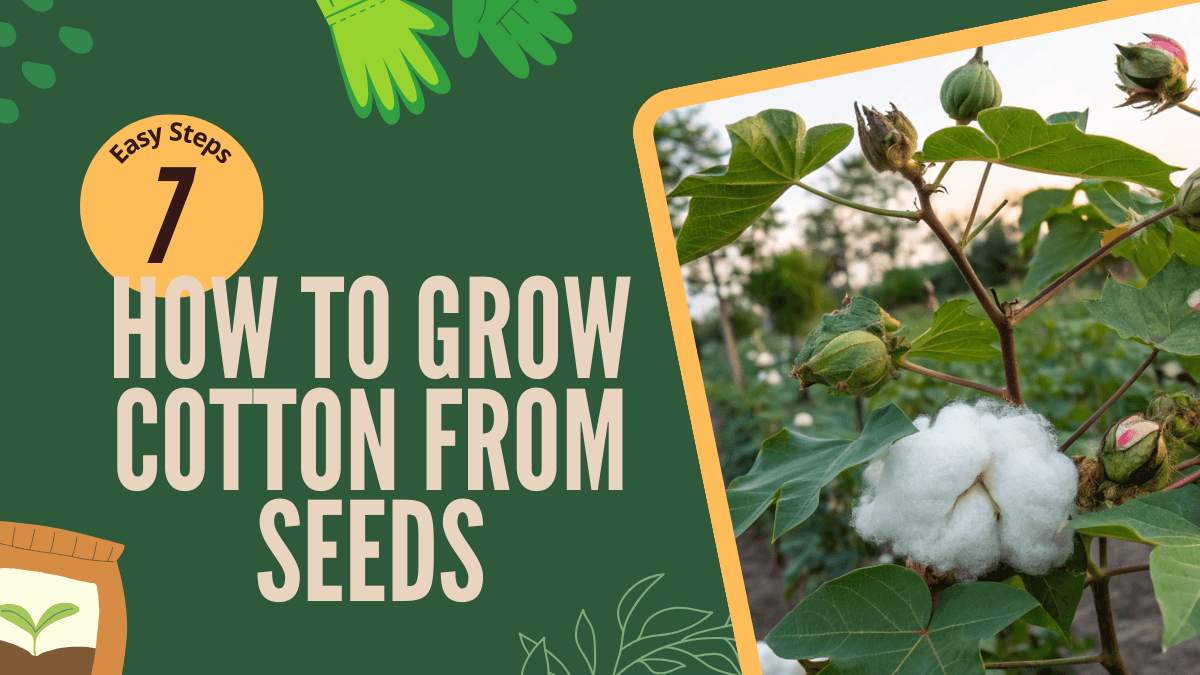Cotton isn’t just a crop for big farms—it’s a fascinating plant you can grow in your garden! Whether you want fluffy bolls for crafts, or just to try something new, this guide covers everything you need to grow cotton from seeds.
While cotton might seem like an “exotic” choice for home gardeners (thanks to its tropical origins and towering commercial reputation), growing it from seeds is simpler than you think.
Why Grow Cotton from Seeds?

Cotton plants (Gossypium spp.) are botanically a perennial shrub in their native tropical and subtropical habitats, where they can grow year-round with hibiscus-like flowers and soft, pillowy bolls.
However, in temperate regions like the U.S. Cotton Belt, it is cultivated as an annual crop due to its inability to survive frost.
Commercial growers treat it as an annual because it requires a long, warm growing season (4–5 frost-free months) to produce viable fiber.
Growing cotton teaches patience (it’s a slow, warm-weather crop) and connects you to a plant that’s shaped human history. Homegrown cotton can be used for DIY projects like stuffing pillows or spinning yarn!
Legal & Environmental Considerations
Before planting, check local regulations. Some regions restrict cotton growing to prevent pest outbreaks (like boll weevils).
Also, cotton requires lots of water and pesticides in commercial settings, but we’ll share eco-friendly tips for home growers!
7 Easy Step-by-Step Guide
Step 1: Choosing the Right Seeds
- Pick a Variety: Opt for short-season types like ‘Pima’ or ‘Upland’ if you’re in a cooler climate.
- Source Seeds: Buy untreated, non-GMO seeds from garden stores or online suppliers. Avoid commercial seeds—they’re often chemically treated.
Step 2: Soak the Seeds (Recommend)

Cotton seeds have a hard outer shell, so it’s a good idea to soak them in water for 24 to 48 hours before planting. They started sprouting in the water. This helps speed up germination and gives your seeds a better start!
(Optionally, the seeds can be soaked in a solution of water with a drop of natural stimulant (e.g., seaweed extract).
Step 3: Preparing to Plant
When to Plant:
Cotton thrives in heat; it doesn’t tolerate frost! Plant seeds outdoors 2–3 weeks after the last frost, when the soil hits 65-70°F (18-21°C). Usually in late April to early May.
Soil Prep:
- Cotton loves well-draining, loamy soil with a pH of 5.5–7.5.
- Mix in compost or aged manure for nutrients.
- Cotton needs plenty of sun to thrive, it doesn’t grow well in the shade. Ensure full sun (6–8 hours daily).
Step 4: Planting Cotton Seeds
- Sow Seeds: Plant 2–3 seeds 1 inch deep, spaced 12–18 inches apart. Not all the seeds will sprout, so it’s a good idea to put a few in each hole to make sure you get plants all along the row. Rows should be 3 feet apart.
- Water Gently: Keep soil moist (not soggy) until germination (5–15 days).
- Thin Seedlings: Once sprouts are 3 inches tall, keep the strongest plant per spot.
TIP: Start seeds indoors 6–8 weeks before last frost in colder areas. Use biodegradable pots to avoid root disturbance.
Step 5: Caring for Cotton Plants
Watering:
- Water deeply 1–2 times weekly. Reduce watering once bolls form to avoid rot. This helps the plant dry out and drop its leaves, so the bolls can open into fluffy cotton.
Fertilizing:
- Use balanced fertilizer (10-10-10) at planting every 3–4 weeks.
- Side-dress with nitrogen when plants are 12 inches tall.
Weeding:
- Mulch around plants to suppress weeds and retain moisture.
Step 6: Pest & Disease Management
- Common Pests: Aphids, spider mites, and boll weevils. Spray with neem oil or insecticidal soap.
- Diseases: Fungal issues like Fusarium wilt. Avoid overhead watering.
- Crop Rotation: To follow good crop rotation, don’t plant cotton where you had okra last year. Also, keep it away from okra and hibiscus, because they all attract nematodes, which are common pests for these plants.
Eco-Friendly Tip: Plant marigolds nearby to repel pests naturally!
Step 7: Harvesting Cotton

The plant will bloom in about 60 to 90 days; it will produce beautiful yellow flowers, which later turn into cotton bolls.
Once they open, you’ll see the fluffy cotton!
Cotton bolls mature 120–150 days after planting. Here’s how to harvest:
- Wait for bolls to split open, revealing fluffy cotton (usually late summer/fall).
- Pick by hand, wearing gloves (boll edges are sharp!).
- Dry harvested cotton in a sunny, airy spot for 1–2 weeks.
Note: Each boll contains seeds—remove them by hand or with a cotton gin for spinning.
Troubleshooting Common Issues
- Yellow Leaves: Overwatering or nitrogen deficiency. Adjust watering and fertilize.
- No Bolls: Extreme heat or insufficient sunlight. Provide shade cloth in scorching climates.
- Dropping Flowers: Too much rain or poor pollination. Hand-pollinate flowers with a brush.
Conclusion
Growing cotton from seeds is a fun, educational project for gardeners. With patience, sunshine, and these tips, you’ll enjoy your own fluffy harvest! Just remember to check local rules, water wisely, and celebrate when those bolls burst open.


 ChatGPT
ChatGPT
 Perplexity
Perplexity
 Claude
Claude

Leave a Reply